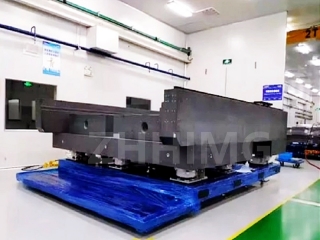Wafer processing equipment is crucial in the electronics industry, and any damage to the granite components can lead to significant consequences. In addition to affecting the accuracy of the equipment, the appearance of the granite components can also affect the overall efficiency of the equipment and its ability to function properly. Hence, it is essential to repair the appearance and recalibrate the accuracy of the damaged Wafer Processing Equipment granite components. In this article, we will discuss how to repair the appearance of the damaged granite components and recalibrate its accuracy.
Repairing the Appearance of the Damaged Granite Components
Step 1: Cleaning
The first step in repairing the appearance of damaged granite components is to clean them thoroughly. Use a cloth and a mild detergent to remove any grime, dirt, or debris that may be present on the surface. You can also use a brush to clean hard-to-reach areas.
Step 2: Scratches and Chips
If the granite components have scratches and chips, you can sand them down using a fine-grit sandpaper. Start with a coarser sandpaper and gradually move up to finer grits until the surface is smooth. The goal is to eliminate any imperfections on the surface to restore its original appearance.
Step 3: Polishing
Once you have sanded down the granite components, the next step is to polish them. Use a granite polish to restore the shine to the surface. Apply the polish with a cloth or a pad and use circular motions to rub it onto the surface. Keep polishing until the surface is smooth and shiny.
Recalibrating the Accuracy of the Granite Components
Step 1: Inspection
The first step in recalibrating the accuracy of the granite components is to inspect them thoroughly. Look for any signs of wear and tear that may be affecting their accuracy. Check for cracks, chips, or any other damage that may have occurred over time.
Step 2: Calibration
Once you have inspected the components, the next step is to calibrate them. Calibration is the process of adjusting the equipment to ensure that it is working correctly. Use a calibration tool to check the accuracy of the components. If you find any inaccuracies, adjust the equipment accordingly.
Step 3: Testing
After calibrating the granite components, the next step is to test them to ensure that they are functioning correctly. Test the components using the equipment they were designed for to check their performance. If you notice any issues during testing, make the necessary adjustments until the components are functioning correctly.
In conclusion, repairing the appearance of damaged granite components and recalibrating their accuracy is essential in the electronics industry. It improves the efficiency and functionality of the equipment, which ultimately leads to better performance and productivity. By following the steps outlined above, you can restore the appearance of the granite components and recalibrate their accuracy without any negative outcomes.
Post time: Jan-02-2024

